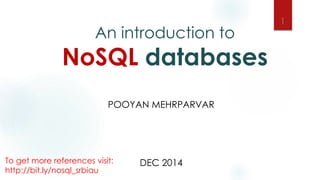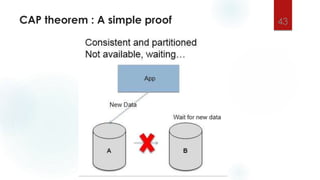The document provides an in-depth overview of NoSQL databases, covering their history, characteristics, and the context in which they are used compared to traditional relational databases. It discusses concepts like aggregate data models, the CAP theorem, and polyglot persistence, as well as the trade-offs between ACID and BASE properties in distributed systems. Concluding with considerations for choosing NoSQL solutions, it emphasizes the importance of evaluating project needs and understanding the limitations of NoSQL databases.




















































